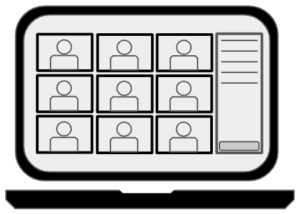While there are offline systems, such as textbooks and worksheets, that can work for remote learning, the most common and effective choices are generally online, digital systems. For that reason, we will be highlighting tips for choosing the most effective online-teaching platforms you can use for remote learning. Of the options available, two are used most often (and frequently in combination with one another).

Self-Paced Remote Learning (asynchronous)
In these systems, students typically work independently through a series of online lessons at their own pace. While there are often key deadlines that must be met, students are usually allowed some flexibility in how fast they progress through the checkpoints.
This type of learning is considered “asynchronous” because students are not all learning at the same time. In fact, students may not even be online at the same time as their teacher. Directions and feedback are provided digitally, usually through a web-based learning management system. These systems provide students with a large amount of control over when and where they learn, but the independent nature of this option also requires significant self-discipline. Students who have difficulty managing their time may struggle in this learning environment. On the other hand, self-motivated students often feel empowered and excel.

Live Remote Learning (synchronous)
This method of instruction is “synchronous,” meaning that the students and teacher are online at the same time. Instruction happens virtually through some sort of videoconferencing software where participants can see and hear each other. This allows the students and teacher to communicate back and forth in real time, and it creates a learning experience similar to a traditional classroom. This synchronous learning environment can be a powerful way to maintain classroom relationships and provide some degree of normalcy during remote learning. While all ages can benefit from this, it is especially important for younger learners.
Because not all students may be able to attend class at a designated time, teachers often record the sessions and post them online for students to watch later. These sessions are usually “optional,” for students who want some real-time contact, need social and emotional support, or desire more personal guidance through course materials.
Combination of Self-Paced and Live Remote Learning
Many teachers use a combination of both self-paced and live remote learning. This allows them to leverage the strengths of each option and offer differentiated forms of instruction depending on the needs of their students. Live instruction helps maintain the social and emotional aspects of a classroom, while self-paced courses offer flexibility and choice for students.

